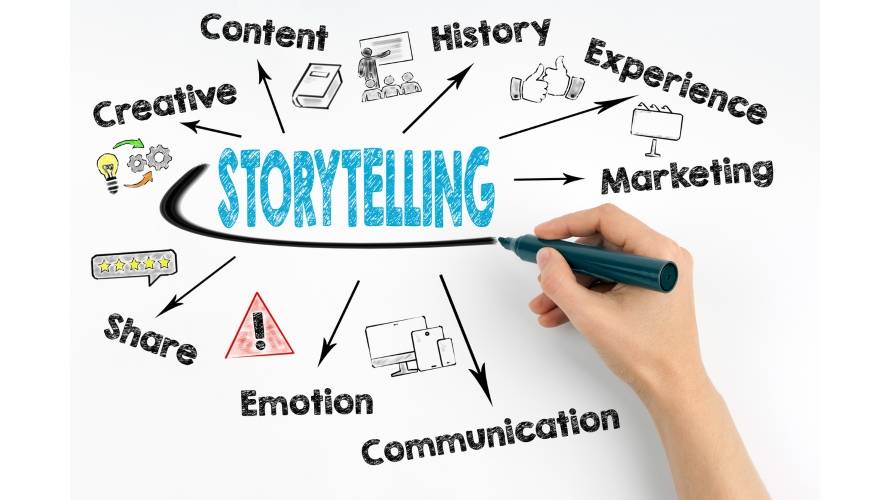THE POWER OF BRAND STORYTELLING: HOW TO CONNECT WITH CUSTOMERS ON A DEEPER LEVEL
In today's highly competitive business landscape, where countless products and services vie for consumers' attention, building a strong connection with customers has become more critical than ever. Traditional marketing techniques are losing their effectiveness as customers become increasingly discerning and immune to blatant advertising. In this challenging environment, a powerful tool has emerged as the key to winning the hearts and minds of consumers: brand storytelling.
What is Brand Storytelling?
Brand storytelling is the art of conveying a brand's message, values, and purpose through compelling narratives. Rather than relying on mundane advertisements that promote product features, this approach creates a narrative that resonates with customers on a deeper emotional level. By weaving stories that connect with people's experiences, desires, and aspirations, brands can establish an emotional bond with their target audience.
The Psychology Behind Brand Storytelling
At the heart of brand storytelling lies a profound understanding of human psychology. Throughout history, storytelling has been an integral part of human communication. Our brains are wired to process and remember information better when it's presented in a narrative form. Emotions play a crucial role in this process. Research shows that emotional engagement with a story enhances our ability to recall information and increases our willingness to share it with others.
When a brand tells a story that triggers emotions, it becomes memorable, relatable, and shareable. It forms a connection between the brand and the customer, ultimately leading to brand loyalty and advocacy.
How to Craft a Compelling Brand Story:
Know Your Brand's Values and Purpose: Before you start crafting your brand story, it's essential to understand your brand's values, mission, and purpose. Identify what sets your brand apart from others and what it stands for. Your story should reflect these core principles.
Identify Your Target Audience: To create a compelling brand story, you need to know who you're telling it to. Understand your target audience, their needs, aspirations, and pain points. Tailor your narrative to address their specific concerns.
Be Authentic and Genuine: Customers are quick to spot inauthentic storytelling. Be genuine, transparent, and honest in your narrative. Share real experiences and show the human side of your brand.
Use the Hero's Journey: The Hero's Journey is a classic storytelling framework popularized by Joseph Campbell. It follows a protagonist (your customer) through challenges and transformation, eventually leading to success. Position your brand as the guide that helps customers overcome obstacles and achieve their goals.
Evoke Emotions: Emotions are at the core of brand storytelling. Create an emotional arc that resonates with your audience. Whether it's through humor, inspiration, nostalgia, or empathy, evoke feelings that make your story unforgettable.
Keep It Simple and Memorable: Avoid complexity in your brand story. Keep it simple, concise, and easy to remember. A clear and straightforward narrative is more likely to stick with your audience.
Utilize Multiple Channels: Share your brand story across various channels, including your website, social media, videos, and advertisements. Consistency in storytelling will reinforce your brand's identity and message.
Encourage User-Generated Content: Brand storytelling isn't just limited to what you create; it also involves what your customers say about you. Encourage user-generated content that reflects their experiences with your brand. This adds authenticity and fosters a sense of community.
Examples of Successful Brand Storytelling:
Nike: Nike's brand story revolves around the concept of "Just Do It." By tapping into the human desire for self-improvement and pushing one's limits, Nike has crafted a narrative that inspires and empowers athletes and everyday individuals alike.
Apple: Apple's brand story is built on challenging the status quo and thinking differently. Their commercials often focus on the user experience and how their products enrich people's lives, making technology more accessible and enjoyable.
Coca-Cola: Coca-Cola's brand storytelling centers around happiness, joy, and sharing moments of togetherness. Their advertisements often feature heartwarming stories of people connecting over a Coke, emphasizing the emotional connections the brand fosters.
Conclusion
In conclusion, brand storytelling is a powerful tool that enables companies to connect with customers on a deeper level. By crafting authentic, emotionally-driven narratives that align with a brand's values and purpose, businesses can create lasting impressions, build loyalty, and turn customers into brand advocates. In today's fast-paced and ever-changing market, the power of brand storytelling has never been more relevant or crucial for business success. So, if you want to stand out and leave a lasting impact, it's time to start telling your brand's story in a way that truly resonates with your audience.


